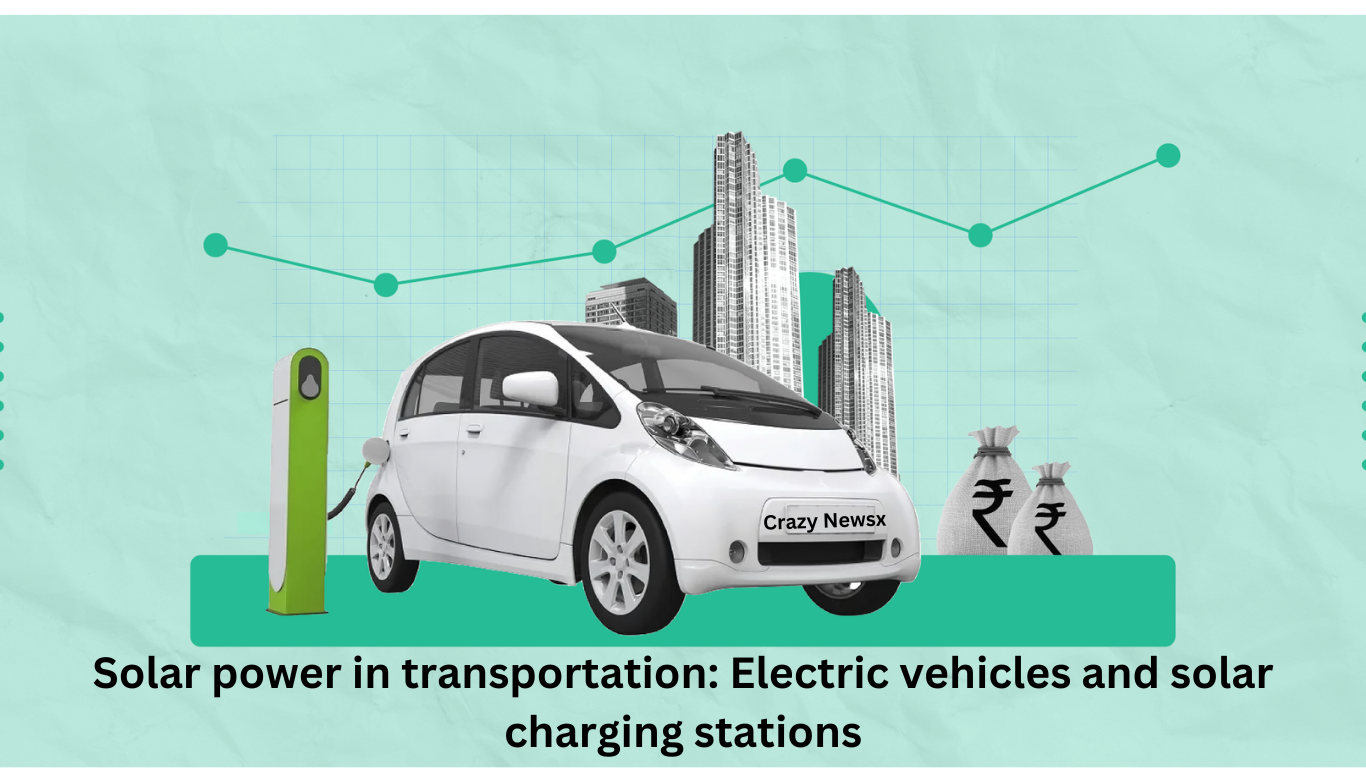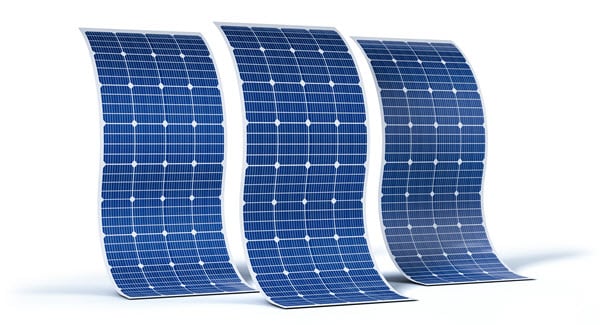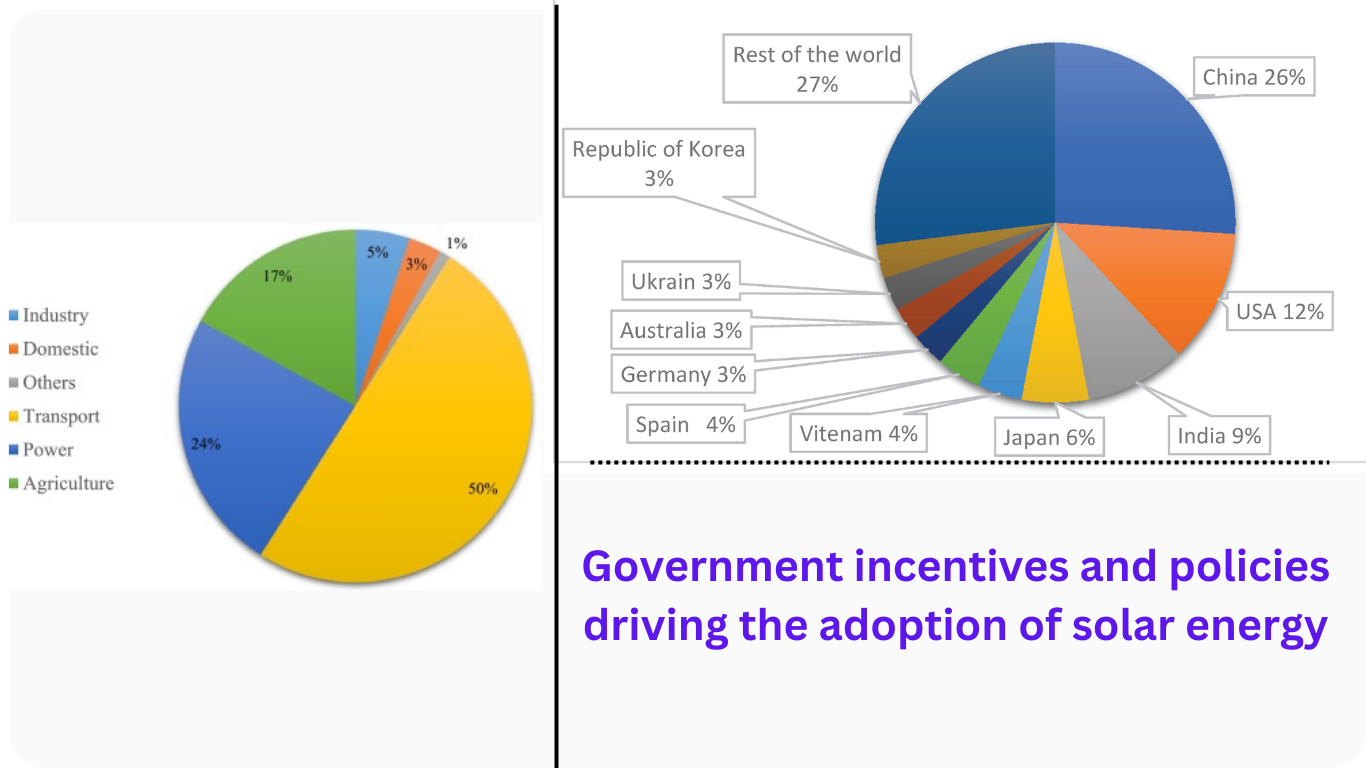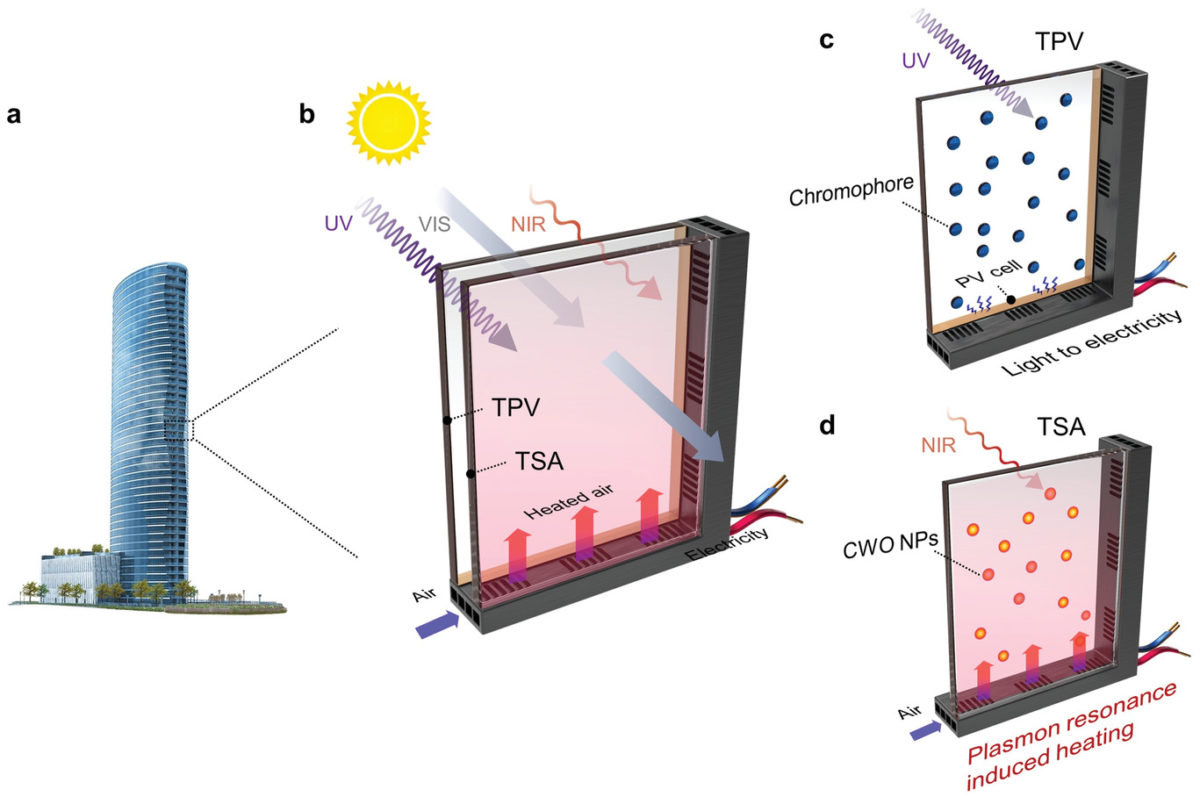[ad1]
Solar Power energy is one of the most promising sources of renewable energy, and it has the potential to revolutionize the way we power our homes and businesses.
Solar power is generated by harnessing the energy from the sun and converting it into electricity. This technology has come a long way from the early days of large, bulky panels that were expensive and difficult to install. Today, we have access to a wide range of innovations that are driving the solar power revolution forward. In this blog post, we’ll explore some of the latest and most exciting innovations in solar power, from new panel designs to advanced energy storage solutions and more. We’ll also look at how these innovations are making solar power more accessible and affordable for homeowners, businesses, and communities around the world. Let’s shine a light on the future of solar power!
The current state of solar power
The current state of solar power is nothing short of revolutionary. With advancements in technology and a growing emphasis on renewable energy sources, solar power has emerged as a prominent player in the global energy landscape. As concerns about climate change and environmental sustainability continue to gain traction, the demand for clean, sustainable energy options has skyrocketed.
Solar power, also known as photovoltaic (PV) energy, harnesses the sun’s abundant and limitless energy to generate electricity. The process involves the use of solar panels, which are made up of photovoltaic cells that convert sunlight into direct current (DC) electricity. This electricity can then be used to power homes, businesses, and even entire communities.
One of the most significant factors contributing to the rise of solar power is its cost-effectiveness. Over the past decade, the cost of solar panels has dropped significantly, making them more accessible to individuals and organizations alike. Additionally, government incentives and tax credits have further incentivized the adoption of solar power, making it an attractive investment for many.
Another key aspect of solar power is its environmental benefits. Unlike fossil fuels, solar power does not produce harmful greenhouse gas emissions or contribute to air pollution. By harnessing the power of the sun, solar energy offers a sustainable and clean alternative to traditional energy sources, reducing our carbon footprint and mitigating the adverse effects of climate change.
Furthermore, solar power has the potential to revolutionize energy access in remote and underdeveloped areas. With its decentralized nature, solar energy can provide electricity to communities that are off the grid or have limited access to traditional power sources. This can improve the quality of life, promote economic development, and bridge the energy divide in regions around the world.
In conclusion, the current state of solar power is one of immense promise and potential. As technology continues to advance and economies of scale are achieved, solar power is becoming an increasingly viable and attractive option for meeting our energy needs. With its environmental benefits, cost-effectiveness, and ability to empower communities, solar power is shining a bright light on the future of renewable energy.
The promise of solar energy
The promise of solar energy has captivated the world, offering a beacon of hope for a sustainable and clean future. Harnessing the power of the sun, solar energy has the potential to revolutionize the way we generate electricity, reduce our dependence on fossil fuels, and mitigate the impacts of climate change.
One of the most enticing aspects of solar energy is its abundant availability. The sun, a seemingly infinite source of energy, delivers an astonishing amount of power to our planet every day. In fact, it is estimated that the amount of sunlight that reaches the Earth’s surface in just one hour could satisfy global energy demands for an entire year. This incredible potential has not gone unnoticed, and researchers and innovators around the world are tirelessly working to unlock the full potential of solar energy.
Solar panels, the most recognizable symbol of solar energy, have come a long way since their inception. Advances in technology have made solar panels more efficient, durable, and affordable than ever before. With the cost of solar panels steadily decreasing, more and more individuals and businesses are embracing solar energy as a viable alternative to traditional power sources.
But solar energy is not limited to just rooftop installations. Innovations in solar technology have given rise to impressive developments such as solar farms, solar-powered vehicles, and even solar-powered buildings. These advancements are not only reducing greenhouse gas emissions but also creating new economic opportunities and job markets.
Furthermore, the promise of solar energy extends beyond its environmental benefits. Solar power systems provide energy independence, allowing individuals and communities to generate their own electricity and reduce their reliance on centralized power grids. This decentralization of energy production promotes resilience and stability, particularly in remote areas or during natural disasters.
The promise of solar energy lies not only in its ability to generate clean power but also in its potential to transform our world. As we continue to embrace and invest in solar innovations, we move closer to a future where renewable energy is the norm, and the sun’s rays power our homes, businesses, and communities. This solar power revolution holds the key to a brighter and more sustainable future for generations to come.
Solar panels: From early developments to cutting-edge technology
Solar panels have come a long way since their early beginnings, and today, they are at the forefront of the solar power revolution. The journey of solar panels began with the discovery of the photovoltaic effect in the early 19th century. However, it was not until the mid-20th century that solar panels started to take shape as a viable source of renewable energy.
Early solar panels were made using bulky and expensive materials, making them inaccessible for widespread use. However, with advancements in technology, solar panels have become more efficient, affordable, and aesthetically pleasing. The development of thin-film solar panels, for example, has allowed for flexible and lightweight designs that can be integrated into various surfaces, such as rooftops and windows.
Furthermore, the efficiency of solar panels has significantly improved over the years. Traditional silicon-based solar panels once had conversion efficiencies of around 15-20%. However, breakthroughs in materials and manufacturing techniques have led to the development of next-generation solar panels with efficiencies exceeding 20%. This means that more sunlight can be harnessed and converted into electricity, maximizing the energy output of each panel.
Cutting-edge technology is pushing the boundaries of solar panel innovation even further. One such advancement is the integration of solar cells into everyday objects, such as solar-powered clothing or solar windows that can generate electricity while still allowing light to pass through. This opens up new possibilities for incorporating solar power into our daily lives and making it a seamless part of our environment.
Moreover, research is underway to develop solar panels that can capture and utilize a broader spectrum of sunlight, including infrared and ultraviolet rays. By harnessing a wider range of solar radiation, these advanced panels could further increase energy production and efficiency, paving the way for a more sustainable future.
In conclusion, solar panels have evolved from early developments to cutting-edge technology, revolutionizing the way we generate and utilize solar power. With continuous innovation and advancements, solar panels are becoming more accessible, efficient, and versatile, driving the solar power revolution and shining a light on a brighter, cleaner future.
Advances in solar panel efficiency
Advances in solar panel efficiency have been a driving force behind the solar power revolution. As technology continues to evolve, scientists and engineers are constantly seeking innovative ways to maximize the output of solar panels and make them more cost-effective for consumers.
One significant breakthrough in solar panel efficiency is the development of high-efficiency photovoltaic cells. These cells are designed to capture a larger portion of the sunlight and convert it into electricity. By using advanced materials and manufacturing techniques, researchers have been able to achieve higher conversion rates, allowing solar panels to generate more power from the same amount of sunlight.
Another area of innovation is the improvement of solar panel design. Engineers are exploring new ways to optimize the arrangement and orientation of solar cells to maximize their exposure to sunlight throughout the day. This includes incorporating tracking systems that can follow the sun’s movement, ensuring that the panels are always positioned at the optimal angle for maximum energy production.
Furthermore, scientists are also working on enhancing the durability and longevity of solar panels. By developing new protective coatings and materials, they aim to increase the panels’ resistance to environmental factors such as extreme temperatures, humidity, and corrosion. This not only improves their performance but also extends their lifespan, making solar power a more sustainable and reliable energy solution.
These advancements in solar panel efficiency have had a significant impact on the widespread adoption of solar power. With higher conversion rates, improved designs, and increased durability, solar panels are becoming more efficient and cost-effective, making them a viable option for both residential and commercial applications.
As the solar power revolution continues to unfold, it is exciting to see how further advancements in solar panel efficiency will shape the future of renewable energy. With ongoing research and technological breakthroughs, we can expect solar power to become an even more prominent player in the global energy landscape, providing clean and sustainable power for generations to come.
The role of energy storage in solar power systems
Energy storage plays a crucial role in the advancement of solar power systems and is a key driver behind the solar power revolution. While solar panels are highly effective at generating clean energy from the sun, they are inherently intermittent, producing energy only when the sun is shining. This poses a challenge when it comes to meeting the energy demands of consumers around the clock. This is where energy storage technologies come into play.
By integrating energy storage systems with solar power systems, excess energy generated during peak sunlight hours can be stored for later use when sunlight is limited or not available. This allows for a more reliable and consistent power supply, reducing the dependence on traditional energy sources and increasing the overall efficiency of the solar power system.
[ad1]
There are various energy storage technologies that are being utilized in solar power systems, including batteries, pumped hydro storage, and thermal energy storage. Batteries, such as lithium-ion batteries, are widely used due to their high energy density, longer lifespan, and ability to be easily scaled up or down depending on the energy requirements. Pumped hydro storage involves using surplus solar energy to pump water to a higher elevation and then releasing it to generate electricity when needed. Thermal energy storage uses heat from solar power to heat or cool a material, which can then be used to generate electricity or provide heating and cooling for buildings.
The integration of energy storage with solar power systems not only addresses the issue of intermittency but also enables the concept of self-sufficiency and independence from the traditional power grid. It allows homeowners and businesses to store excess energy during periods of low demand and use it during peak hours or during power outages. Additionally, energy storage systems can also provide ancillary services to the grid, such as frequency regulation and voltage support, contributing to the stability and reliability of the overall power system.
As technology continues to advance, energy storage systems are becoming more efficient, affordable, and accessible. This opens up new opportunities for the widespread adoption of solar power and paves the way for a future where renewable energy becomes the primary source of electricity worldwide. The role of energy storage in solar power systems is not just a supporting element but a crucial component that enables the transition to a sustainable and clean energy future.
Solar power in transportation: Electric vehicles and solar charging stations

The solar power revolution is not limited to just powering homes and businesses. It is now making its way into the transportation industry, bringing about a new era of sustainable and efficient mobility. Electric vehicles (EVs) have gained significant popularity in recent years, and solar power plays a vital role in their charging infrastructure.
With zero emissions and reduced reliance on fossil fuels, EVs are paving the way for a greener future. However, the challenge of charging these vehicles efficiently and sustainably remains. This is where solar charging stations come into play.
Solar charging stations harness the power of the sun to charge electric vehicles, providing a clean and renewable energy source. These stations typically consist of photovoltaic panels installed on canopies or rooftops, converting sunlight into electricity. The generated power is then stored in batteries or directly fed into the electric grid, ensuring a constant and reliable energy supply.
One of the significant advantages of solar charging stations is their ability to generate electricity on-site, reducing dependence on traditional power grids. This not only helps to lower carbon emissions but also provides a more cost-effective and decentralized charging solution. Additionally, solar charging stations can be strategically placed in areas with high solar exposure, maximizing energy generation potential.
The integration of solar power and electric vehicles is creating a symbiotic relationship, accelerating the adoption of both technologies. EV owners can charge their vehicles using clean energy, minimizing their carbon footprint while enjoying the convenience of electric mobility. Solar charging stations contribute to the overall growth of the solar power industry, driving innovation and investment in renewable energy infrastructure.
As the solar power revolution continues to unfold, the combination of electric vehicles and solar charging stations is a promising step towards a sustainable and environmentally-friendly transportation system. This integration not only reduces greenhouse gas emissions but also enhances energy independence, resilience, and efficiency. It is a shining example of how innovations in solar power are transforming various sectors and shaping a brighter future for our planet.
Solar power in homes and businesses: Benefits and cost savings

Solar power is rapidly gaining popularity as a reliable and sustainable energy solution for both homes and businesses. The benefits and cost savings associated with solar power are driving a revolution in the way we harness and consume energy.
One of the key advantages of solar power in homes and businesses is the significant cost savings it offers. By installing solar panels, individuals and organizations can generate their own electricity, drastically reducing or even eliminating their reliance on traditional energy sources. This translates into substantial savings on utility bills over time, allowing homeowners and businesses to allocate those funds to other important areas.
Moreover, solar power systems have a long lifespan, typically lasting for 25 to 30 years, with minimal maintenance requirements. This means that once the initial investment is made, the cost of generating electricity becomes almost negligible. In addition, many governments and local authorities offer attractive incentives and tax credits to encourage the adoption of solar power, further enhancing the financial benefits.
Beyond the monetary advantages, utilizing solar power also has a positive impact on the environment. Solar energy is clean and renewable, unlike fossil fuels, which contribute to greenhouse gas emissions and air pollution. By transitioning to solar power, homes and businesses can significantly reduce their carbon footprint and contribute to a more sustainable future.
Furthermore, installing solar panels on rooftops or in open spaces can increase the value of properties. Potential buyers are increasingly interested in eco-friendly and energy-efficient homes and businesses, making solar power systems a desirable feature that can enhance the marketability and resale value of properties.
In conclusion, harnessing solar power in homes and businesses offers numerous benefits and cost savings. From reducing electricity bills and taking advantage of incentives to promoting sustainability and increasing property value, solar power is driving a revolution that is illuminating the future of energy consumption.
Emerging technologies in solar power: Thin-film solar cells, solar paint, and more

The solar power industry has been experiencing a remarkable revolution in recent years, driven by a wave of emerging technologies that are reshaping the way we harness and utilize solar energy. Among these groundbreaking innovations are thin-film solar cells and solar paint, which hold immense potential for transforming the solar power landscape.
Thin-film solar cells, unlike traditional silicon-based solar panels, are incredibly flexible and lightweight, making them ideal for various applications. These cells are made by depositing a thin layer of light-absorbing material onto a flexible substrate, such as plastic or metal. This innovative technology opens up new possibilities for solar integration into unconventional surfaces, such as curved structures, windows, and even clothing. With this flexibility, thin-film solar cells have the potential to revolutionize the way we think about solar power and its integration into our everyday lives.
[ad2]
Another exciting development in the field of solar power is solar paint, also known as photovoltaic paint or solar coatings. This cutting-edge technology involves the creation of paint-like substances that can be applied to surfaces, transforming them into solar panels. These solar-coated surfaces can then generate electricity when exposed to sunlight. Imagine a world where buildings, cars, and even streets are covered in solar paint, effortlessly harnessing solar energy and powering our cities in a sustainable way.
In addition to thin-film solar cells and solar paint, there are other emerging technologies pushing the boundaries of solar power. These include solar windows, which incorporate transparent solar cells into glass panels, allowing buildings to generate electricity while still maintaining natural light. Furthermore, solar trackers are gaining popularity as they enable solar panels to follow the sun’s movement, maximizing energy production throughout the day.
The adoption of these innovative technologies not only enhances the efficiency and effectiveness of solar power systems but also expands their reach and accessibility. As these emerging technologies continue to evolve and mature, we can expect to see a significant acceleration in the global transition towards clean and renewable energy sources.
In conclusion, the future of solar power is bright, thanks to the emergence of cutting-edge technologies such as thin-film solar cells, solar paint, solar windows, and solar trackers. These advancements hold the potential to revolutionize the way we generate and utilize solar energy, paving the way for a more sustainable and environmentally friendly future. By embracing these innovations, we can harness the power of the sun to meet our energy needs while reducing our carbon footprint.
Government incentives and policies driving the adoption of solar energy

Government incentives and policies have played a crucial role in driving the widespread adoption of solar energy. As the world grapples with the urgent need for sustainable and clean energy solutions, governments around the globe have recognized the potential of solar power to address these challenges.
One of the most powerful incentives offered by governments is financial support in the form of grants, tax credits, and subsidies. These incentives help to alleviate the upfront costs associated with installing solar panels, making solar energy more affordable and accessible to a wider range of individuals and businesses. By reducing the financial barriers, governments are encouraging more people to embrace solar energy and contribute to a greener future.
In addition to financial incentives, governments have also implemented supportive policies to facilitate the growth of the solar power industry. These policies include feed-in tariffs, net metering, and renewable portfolio standards. Feed-in tariffs ensure that solar energy producers are paid a fair price for the excess electricity they generate and feed back into the grid. Net metering allows solar energy system owners to offset their electricity bills by exporting surplus power to the grid. Renewable portfolio standards mandate that a certain percentage of energy generation must come from renewable sources, including solar power, thereby creating a market demand for solar installations.
Furthermore, governments have established research and development programs to encourage innovation in solar technology. By investing in research, governments aim to improve the efficiency and affordability of solar panels, energy storage solutions, and other related technologies. These efforts have resulted in significant advancements, such as the development of more efficient solar cells, innovative battery storage systems, and integrated solar solutions for residential and commercial applications.
[ad2]
The combination of financial incentives, supportive policies, and research initiatives has created a favorable environment for the solar power revolution. Governments are not only recognizing the environmental benefits of solar energy but also the economic advantages, such as job creation and reduced dependence on fossil fuels. With continued government support, the solar industry is poised to grow even further, playing a crucial role in shaping a sustainable and renewable energy future.
The future of solar power: Potential advancements and impact on the energy landscape

The future of solar power holds immense potential for advancements that could revolutionize the energy landscape as we know it. With the ever-growing concern for sustainable and renewable energy sources, solar power has emerged as a frontrunner in meeting our energy needs while reducing our carbon footprint.
One of the most exciting prospects in the realm of solar power is the development of more efficient and affordable solar panels. Currently, solar panels capture only a fraction of the sunlight that hits them, but ongoing research and development aim to improve their efficiency and increase energy conversion rates. Advancements in materials, such as perovskite solar cells, show promising potential for achieving higher efficiency and lowering costs in the near future.
Another groundbreaking innovation is the integration of solar power with energy storage systems. While solar energy is abundant during the day, storing excess energy for use during the night or on cloudy days remains a challenge. However, advancements in battery technology, such as the widespread adoption of lithium-ion batteries and the exploration of new materials like graphene, offer hope for more efficient and cost-effective energy storage solutions. This integration would enable solar power to provide a reliable and consistent energy supply, even when sunlight is not available.
Furthermore, the future of solar power extends beyond traditional rooftop installations. The concept of solar windows, where transparent solar panels are incorporated into building facades, holds great promise. These windows can harness solar energy while still allowing natural light to enter buildings, making them an efficient and aesthetically pleasing solution for energy generation.

Additionally, solar power is poised to play a pivotal role in the transportation sector. The development of solar-powered vehicles, from cars to buses and even planes, could reduce reliance on fossil fuels and significantly lower carbon emissions. Solar-powered charging stations and the integration of solar panels into roads could also enable vehicles to be charged while on the move, revolutionizing the concept of sustainable transportation.
The impact of these potential advancements in solar power on the energy landscape cannot be understated. As solar power becomes more efficient, affordable, and seamlessly integrated into our daily lives, it has the potential to transform the way we generate and consume energy. This shift towards clean and renewable energy sources will not only reduce our dependence on fossil fuels but also mitigate the environmental impact of traditional energy production.
In conclusion, the future of solar power looks promising. Continued innovation and advancements in solar technology hold the key to unlocking its full potential. With increased efficiency, energy storage solutions, architectural integration, and transportation applications, solar power is set to shine a bright light on the future of sustainable energy and pave the way for a cleaner and more sustainable world.
Innovation is the driving force behind the solar power revolution, and in this blog post, we have explored some of the most exciting advancements in the industry. From more efficient solar panels to innovative storage solutions, these innovations are paving the way for a brighter and more sustainable future. As solar power becomes increasingly accessible and affordable, we can expect to see a significant shift towards renewable energy sources. Let’s continue to support and embrace these innovations to create a cleaner and greener world for generations to come.


